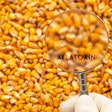
According to all predictions, the weather in Midwest, the corn belt of the U.S., will continue to be wet. This implies we will have an outburst of mold growth, not only in the field, but also during storage. In other words, prepare for high levels of all kinds of mycotoxins in cereals and soybeans. This is not news, but it pays to remind us of what can be done to overcome this unavoidable problem. And, in my opinion, feed additives against mycotoxins should be a last resort measure as an integral part of a comprehensive plan to face the issue of mycotoxins in feed. The following four steps are offered for consideration:
1. Prevention
As molds require humidity to grow, it is advisable to delay harvest if the period around harvest is especially humid. Alternatively, to reduce mold growth during storage, it is advisable to dry-heat the cereals before storage. It is now too late to consider picking varieties that are resistant to mold growth, but this is perhaps the right time to plan accordingly for next year.
2. Post-harvest control
During harvest and storage, handling (transportation from silo to silo) should be minimal to avoid breakage of the seeds. As it is known, molds find it difficult to multiply without first penetrating the outer layer of the seed; thus, it pays to avoid excessive handling, or over-drying of kernels. To this end, seed humidity should be minimal either by controlling harvesting time and dry-heating as described above, or maintaining average moisture content around 12-14 percent by circulation or other means of seed aeration during storage. Finally, cleaning storage silos before filling them up with the new harvest eliminates "hot" pockets harboring a huge population of molds.
Additives to control mold growth include salts of sodium and calcium propionate. A typical dosage of 0.2 percent is recommended for mild cases of mold infection, reaching 0.5 percent in heavily infected batches. Such organic acids are mixed in with the cereals usually during loading of the silos. It should be noted here that organic acids are effective against the molds, and not against any mycotoxins already present in the cereals.
3. Neutralization
This is different from mold inhibition as it relates to neutralizing the toxins produced my molds: the mycotoxins. Today, there are two major ways of neutralizing the effect of mycotoxins in feed. One is by adding a binding agent that prevents mycotoxins from interacting with the animal. Examples of such agents are: bentonite, sepiolite, aluminosilicate, and yeast cell wall fragments. In the case of clays, up to 2 percent might be required to completely detoxify a heavily infected batch of feed. The second method is that of destruction by means of enzymatic action or ammonization, which can be more effective, but also more expensive as well. Lately, it has been suggested that a liver protector is added in animal feed as mycotoxins that escape these neutralizing agents end up causing significant damage to the liver.
4. Dilution
This is the "old way" of treating the mycotoxin problem. This method does not eliminate the problem; it only minimizes the problem to levels that are considered less harmful. In this method, a part of the contaminated batch was mixed with a larger part of non-contaminated material. As the effects of mycotoxins are dosage related, reducing their concentration in feed by the simple method of dilution offers a less expensive, albeit labor intensive, method of handling this problem.
In brief, the problem of mycotoxins in feed is real and it must be addressed to avoid losses in animal productivity. Relying on an anti-mycotoxin binder is considered insufficient. Instead, a comprehensive prevention plan is required to curb mold growth, in addition to measures taken to minimize the impact of produced mycotoxins. To this end, a vigorous testing program should be in place and associated with a strong laboratory that can offer timely and reliable analytical services.

















